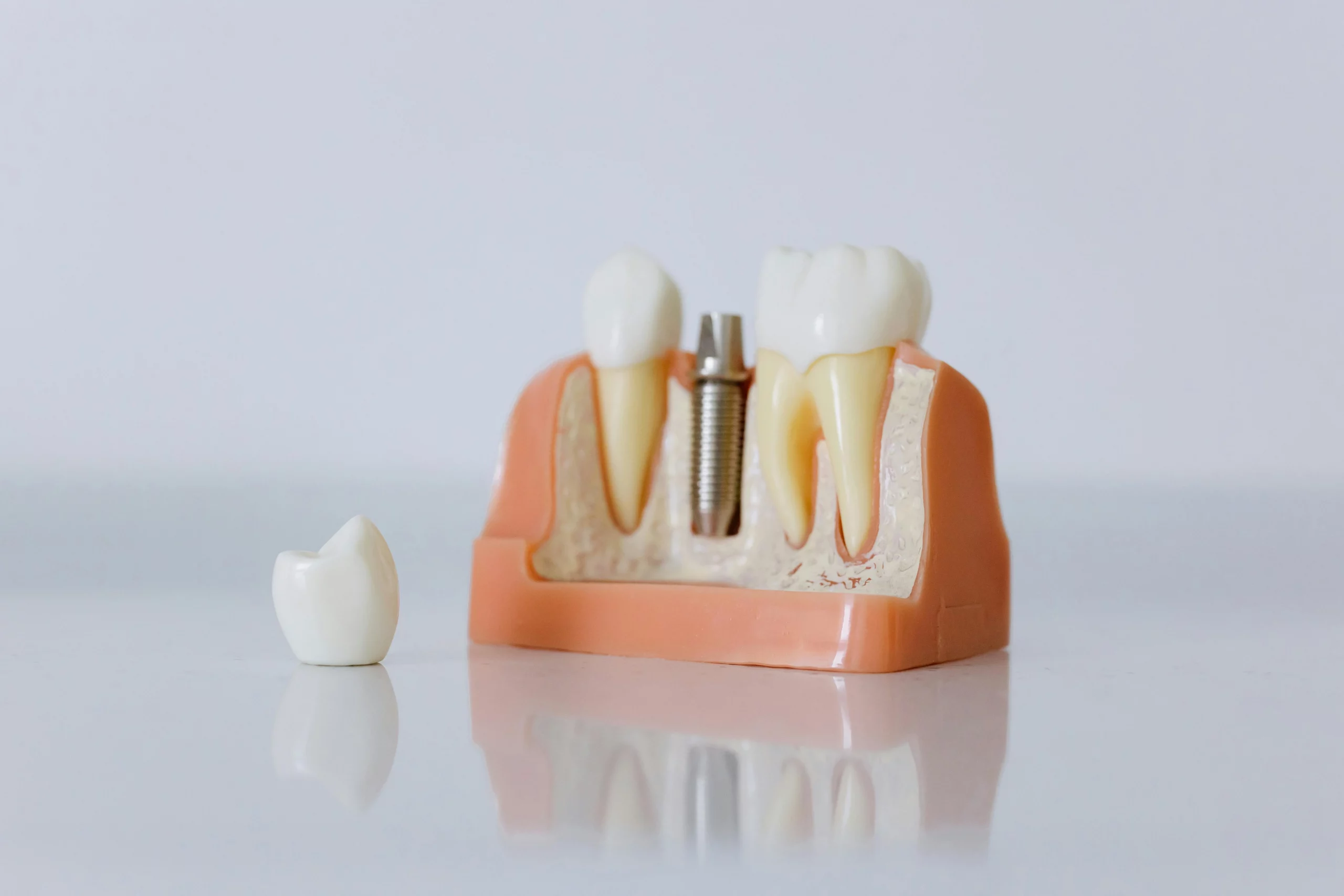The loss of a tooth can be a significant and, at times, distressing experience, impacting both oral function and personal confidence. Dental implants, however, have emerged as a highly effective, enduring solution that closely replicates the appearance and function of natural teeth. By integrating directly with the jawbone, these implants provide long-term stability and support, often lasting for decades.
Whether one has recently undergone a tooth extraction or is simply evaluating potential restorative options, it is essential to develop a thorough understanding of dental implant procedures. This knowledge enables individuals to make well-informed, confident decisions regarding their oral health. The following discussion will address key considerations, including optimal timing for implant placement, associated costs, and strategies for selecting a qualified dental provider.
Dental Implants After Extraction: Why Timing Matters

When a tooth is lost or extracted, dental implants offer a long-lasting and natural-looking solution. But one thing many people don’t realize is how important timing is after that extraction. Delaying treatment can lead to bone loss, shifting teeth, and even complications that make implant placement more difficult or more expensive.
The best outcomes come from planning early. Whether you’re considering same-day implants or waiting for healing, understanding your options can help you make the most informed decision for your health, appearance, and comfort. Below, we’ll walk you through the timelines, steps, costs, and key questions to ask when you’re ready for this transformative procedure.
Dental Implants After Extraction: Why Timing Matters
The timing of dental implant placement following an extraction is critically important. If the procedure is performed prematurely, the jawbone may not be adequately prepared, whereas excessive delay can result in bone resorption, diminishing the chances of a successful outcome. Dental professionals conduct a thorough assessment of each patient’s oral condition, considering factors such as immediate, early, or delayed placement based on individual healing responses. An informed understanding of the recommended timeline empowers patients to make sound decisions and minimizes the risk of future complications.
Immediate vs. Delayed Implant Placement
Some patients can receive an implant on the same day their tooth is extracted, while others may need to wait weeks or months. Immediate implant placement has the advantage of preventing bone loss and reducing overall treatment time. It’s often recommended if the surrounding bone and gum tissue are healthy and infection-free.
Delayed implant placement allows time for healing, especially if the extraction site is infected or lacks adequate bone. Your provider may suggest this if there’s trauma to the area, or if bone grafting is needed to prepare the site. Each option has pros and cons, and a skilled implant dentist will help guide your decision based on your condition.
Bone Loss and the Importance of Early Planning
Once a tooth is lost, the bone that once supported it begins to shrink—a process called resorption. In fact, within the first year after extraction, you can lose up to 25% of the bone width in that area. Waiting too long for an implant can make placement more complex, requiring additional procedures like bone grafts to rebuild support. That’s why planning ahead matters. Getting an evaluation within weeks of your extraction can open the door to smoother, simpler, and more cost-effective treatment.
Healing Times Before Implant Surgery
If you aren’t eligible for a same-day implant, your dentist may advise a healing period of 2 to 4 months before proceeding. This allows the gum tissue to heal and inflammation to subside. In some cases, especially after bone grafting, you might need to wait up to 6 months before implant surgery. During this time, you might wear a temporary prosthetic to maintain aesthetics and function. Healing protocols are carefully tailored to reduce infection risk and ensure implant success later on.
How Dental Implant Surgery Works After Extraction

When a tooth is removed, the surrounding jawbone and gum tissue begin a necessary healing process. This period is essential prior to the placement of a dental implant. In certain situations, assuming the site is healthy and there is sufficient bone structure, an implant may be placed immediately following extraction. If these conditions aren’t met, however, dental professionals typically recommend waiting several weeks or even months. This allows for adequate healing and new bone growth, which are both crucial for the long-term stability of the implant.
Step-by-Step Overview of the Process
- The initial phase involves a comprehensive clinical assessment, including digital radiographs and, in certain cases, three-dimensional imaging. This diagnostic stage ensures precise evaluation of bone structure and optimal planning for implant placement.
- If the affected tooth remains present, extraction is performed with meticulous care to preserve the integrity of adjacent tissues. Preservation of the site is critical for subsequent procedural success.
- In instances where alveolar bone volume is insufficient, bone grafting procedures are implemented. This preparatory step is essential for establishing a stable foundation capable of supporting the dental implant.
- A titanium fixture is surgically positioned within the jawbone, functioning as an artificial tooth root. This phase requires surgical expertise to ensure accurate placement and long-term stability.
- A period of healing, termed osseointegration, follows. During this time, the implant undergoes biological integration with native bone tissue, a process that may extend over several weeks to months.
- Upon confirmation of successful integration, an abutment is affixed to the implant, followed by placement of a custom-fabricated crown. This final restorative phase aims to achieve both functional and esthetic rehabilitation.
When executed by a skilled implantologist adhering to established protocols, the procedure demonstrates a high rate of clinical success. Regular follow-up and maintenance are recommended to ensure long-term outcomes.
Use of Bone Grafts and When They’re Needed
Bone grafting is often recommended if the extraction site lacks sufficient bone to securely hold an implant. Grafts can come from your own body, donor tissue, or synthetic materials—all safe and commonly used. The graft acts as a scaffold, encouraging new bone growth over time. Your dentist might place a bone graft immediately after extraction, even if you don’t plan to get an implant right away. This keeps the site stable and open for future options.
How Long Between Extraction and Implant Placement
The ideal timing for dental implant placement really depends on your bone quality and overall oral health. In certain cases, immediate placement is possible sometimes the implant can go in right after the extraction, all in one visit. For others, it’s better to wait around six to eight weeks, giving your mouth time to heal. If bone grafting or additional healing is needed, the waiting period might stretch to three to six months.
Delaying the implant beyond six months can mean you’ll need more extensive procedures to prepare the site. That’s why it’s strongly advised to consult with your implant dentist early in the process, ideally before the tooth is even removed. Early planning can help you avoid unnecessary complications down the line.
Cost of Dental Implants After Tooth Removal
The overall cost of dental implants following tooth extraction is influenced by several variables, including the timing of the procedure, geographic location, and the potential need for supplementary treatments such as bone grafts or sinus lifts. The timing is particularly significant, as some cases require a healing period post-extraction before implant placement, potentially extending both the duration and expense of treatment. Additionally, regional differences can substantially affect pricing, with urban centers often commanding higher fees. Being informed about these factors in advance enables more effective medical and financial planning, thereby reducing the likelihood of unexpected expenses.
What Affects Pricing Post-Extraction
The cost of dental implants is influenced by several variables, including the necessity for bone grafting, the type and number of implants required, geographic location of the clinic, the provider’s level of expertise, and the technology utilized during planning and placement. Typically, the price for a single dental implant—including the crown—ranges from $3,000 to $6,000. It is important to note, however, that additional procedures such as sinus lifts or the placement of multiple implants can further increase the overall expense.
Insurance and Financing for Dental Implants
While some dental insurance plans now offer partial coverage for implants, many still treat it as an elective procedure. However, if tooth loss affects your ability to eat or speak, medical necessity may apply. Many providers in Frederick and surrounding areas offer flexible financing plans, including monthly payment options. Third-party financing like CareCredit or in-house dental savings plans can help make implants more accessible without upfront cost.
Comparing Single Tooth Implant Cost vs. Full Arch
The cost of dental implants varies considerably depending on the scope of treatment. For a single tooth implant, patients can expect to pay between $3,000 and $6,000. When multiple teeth require replacement, an implant-supported bridge spanning three to four teeth typically ranges from $6,000 to $10,000. Full-arch restorations, such as the All-on-4 method, are priced significantly higher, with costs generally falling between $15,000 and $30,000 per arch.
While the upfront expense for full-arch solutions is greater, these options may prove more economical on a per-tooth basis when replacing several teeth simultaneously. It is advisable to review all available treatment paths during a professional consultation to determine the most appropriate solution for both clinical needs and budgetary considerations.
Choosing Dental Implants Near Me After Extraction
Selecting a qualified dental provider for implants following a tooth extraction is quite important. Ideally, you want someone with substantial experience in implant procedures, credentials and a track record actually matter here. Advanced imaging technology isn’t just a bonus; it’s pretty much essential for precise placement and successful outcomes. Tailored treatment plans are another key factor; one-size-fits-all won’t cut it when it comes to your health.
There’s also the practical side: proximity. Having a local provider makes follow-up visits much more convenient and ensures consistent support during the healing process. Ultimately, an experienced and well-equipped dental professional can significantly enhance your results and help minimize the risk of complications.
What Makes a Good Implant Provider
Not all dentists possess the same depth of expertise in implantology. It’s essential to seek out a practitioner with substantial, specialized training or recognized certification in dental implants, someone who’s not just casually familiar, but genuinely experienced. Advanced clinics will employ digital imaging technology for treatment planning, which significantly increases accuracy and improves patient outcomes. You really don’t want to settle for guesswork when it comes to your oral health.
Additionally, a provider’s experience with post-extraction cases is crucial. A demonstrated history of successful cases indicates both competence and reliability, rather than someone who’s just starting out in the field. Equally important, though, is the provider’s approach to patient care. A dentist who takes the time to explain procedures, answer your questions, and truly listen fosters a sense of trust. This relationship is fundamental—it helps ensure you feel informed, supported, and confident throughout your treatment.
Questions to Ask at Your Implant Consultation
- Do I qualify for immediate implant placement?
- Will I need bone grafting, and if so, why?
- What is the full treatment timeline and cost?
- What materials do you use for implants and crowns?
- What’s your success rate with post-extraction cases?
Bring a list of your concerns, dental history, and even X-rays if you’ve seen another provider. The more informed your dentist is, the better your outcome will be.
Why Experience Matters with Post-Extraction Implants
Placing implants after extraction requires a high level of precision and judgment. The gum tissue and bone are in a transitional state, and the smallest misstep can affect implant stability. Experienced dentists understand how to adapt to your body’s healing response, minimize trauma, and ensure your implant lasts for decades. Ask how many implants your provider places each year and whether they use guided surgical techniques—it can make all the difference.
Frequently Asked Questions (FAQs)
1. Can I get a dental implant the same day as extraction?
In many cases, immediate dental implant placement is a viable option. If the extraction site has healthy bone and no signs of infection, your dentist may recommend placing the implant on the same day. This approach can reduce the overall treatment timeline and help preserve bone density. However, not everyone is a candidate, your provider will carefully assess your oral health before making a recommendation.
2. How long should I wait for a dental implant after extraction?
It depends on your oral health and the specifics of your treatment plan. If immediate dental implant placement isn’t suitable, most patients typically wait 2 to 6 months after extraction to allow the area to heal properly. During this time, your dentist may place a bone graft to preserve the socket and maintain the bone structure. This helps ensure a stable foundation for future implant placement and improves long-term outcomes.
3. What if I lose bone before I get an implant?
Bone loss after tooth extraction is a natural process, especially if treatment is delayed. Fortunately, bone grafting is a reliable way to restore lost volume and prepare the area for successful dental implant placement. The procedure is safe and commonly performed, though it may extend your overall treatment timeline by a few months. Planning ahead with your dentist can help minimize the extent of grafting needed and support better long-term results.
4. Is it painful to get a dental implant after a tooth is pulled?
Most patients experience only mild discomfort during and after dental implant surgery. Local anesthesia is typically used, and sedation options are available to enhance comfort if needed. Any post-operative soreness is usually manageable with over-the-counter pain relievers. Your dentist will provide personalized aftercare instructions to support a smooth and successful recovery.
5. Do dental implants last longer after early placement?
Yes. Early implant placement especially within a few weeks or even on the same day as extraction helps preserve bone structure and gum contours, setting the stage for more natural and lasting results. Delaying the procedure can lead to bone loss, making future implant placement more complex. When done under ideal conditions, dental implants are highly durable and can last over 20 years with consistent oral care. Timely treatment often leads to better stability and aesthetics in the long run.
Losing a tooth can feel overwhelming, but it doesn’t have to be permanent. Dental implants offer a reliable, long-term solution that restores both form and function. And the sooner you act, the better your results can be.
If you’ve recently lost a tooth or are planning an extraction, now is the perfect time to schedule a dental implant consultation. Let a qualified provider walk you through your options and build a personalized plan that fits your needs, your schedule, and your smile goals. Don’t wait for problems to grow, take the first step toward a stronger, healthier smile today.


